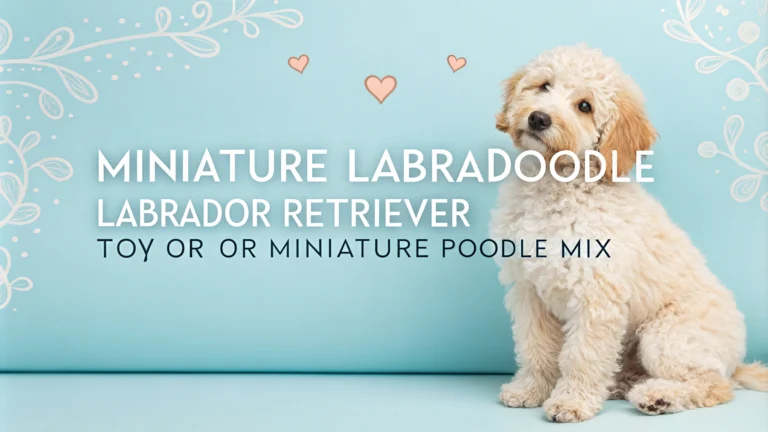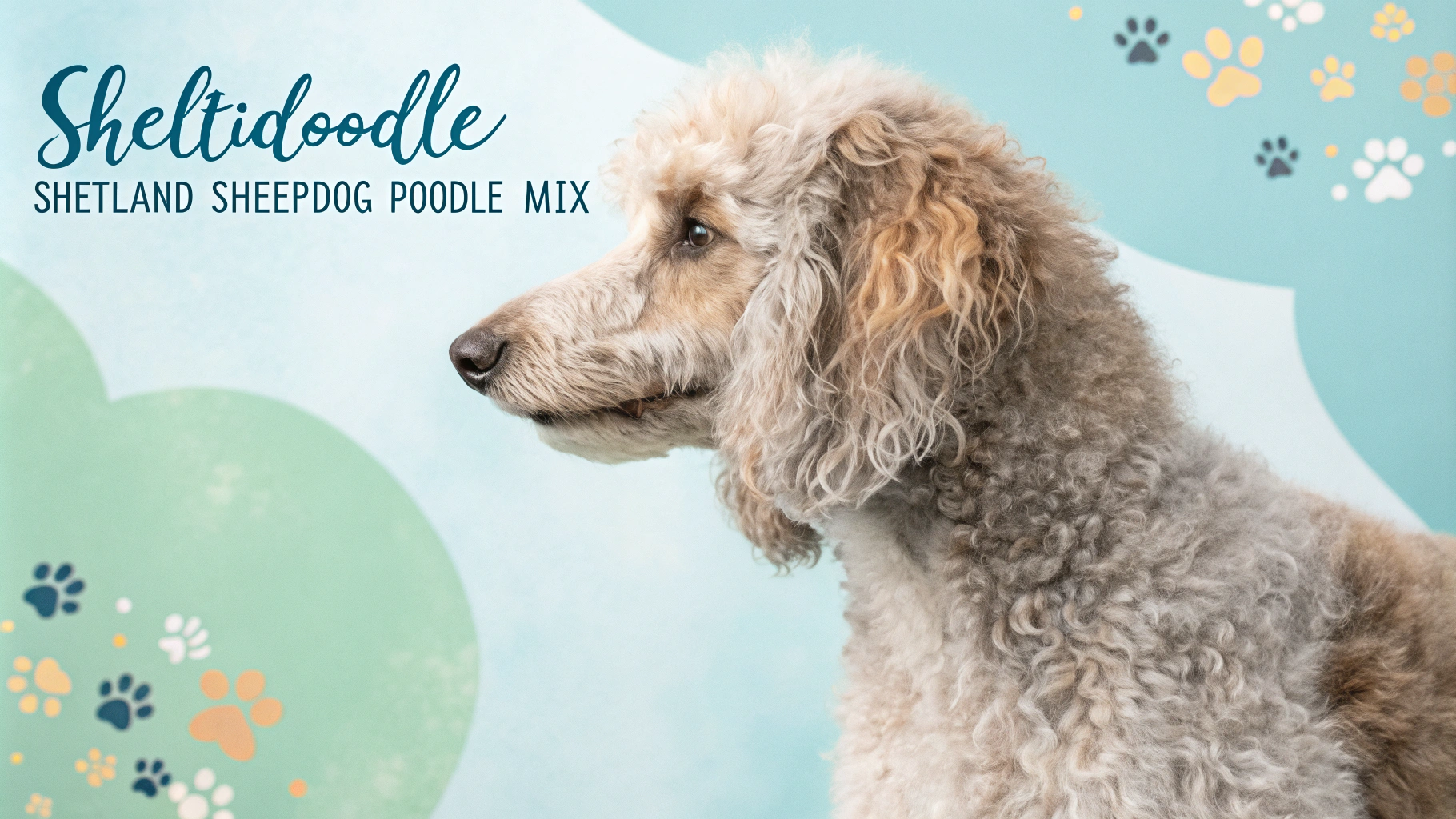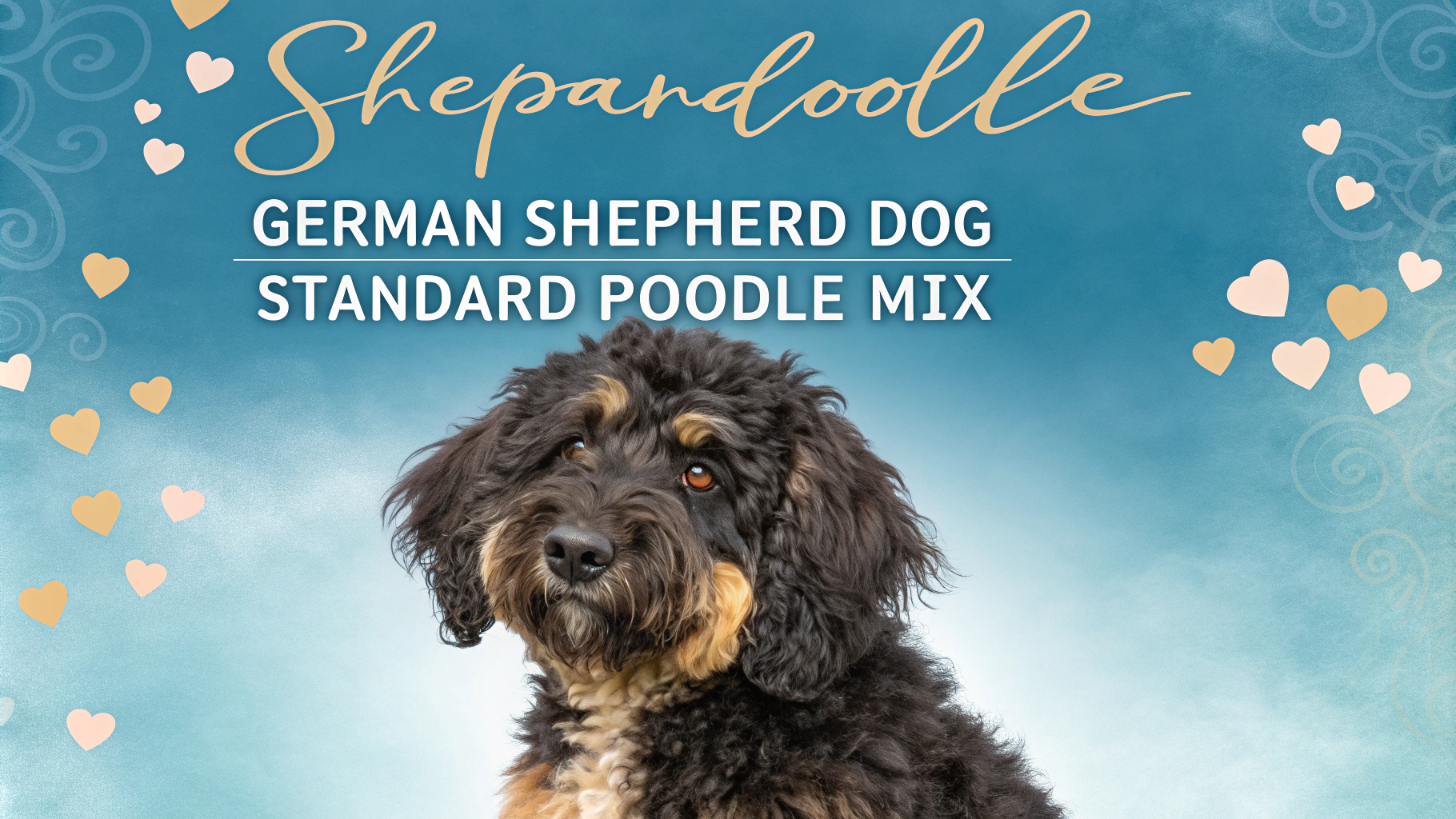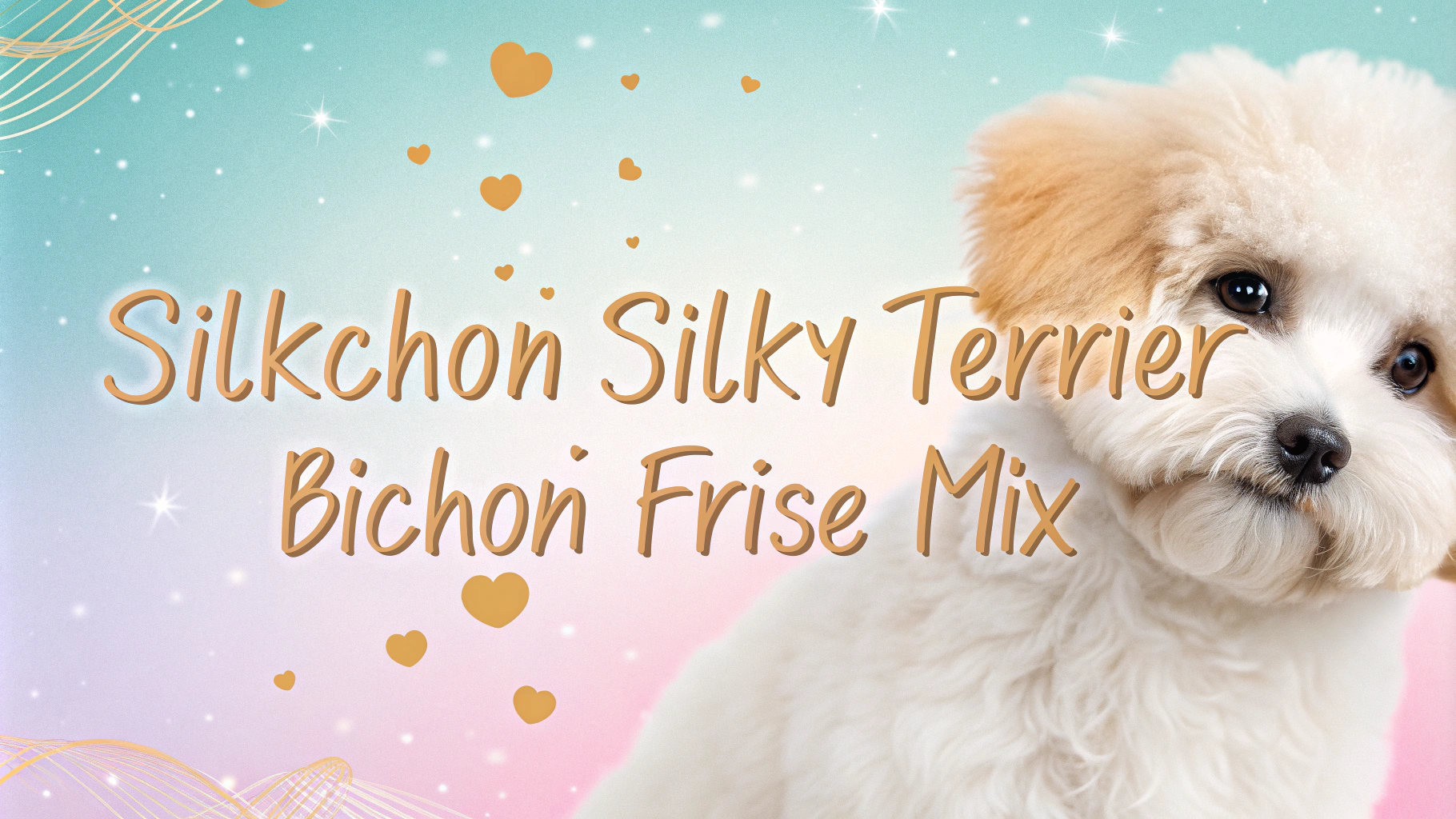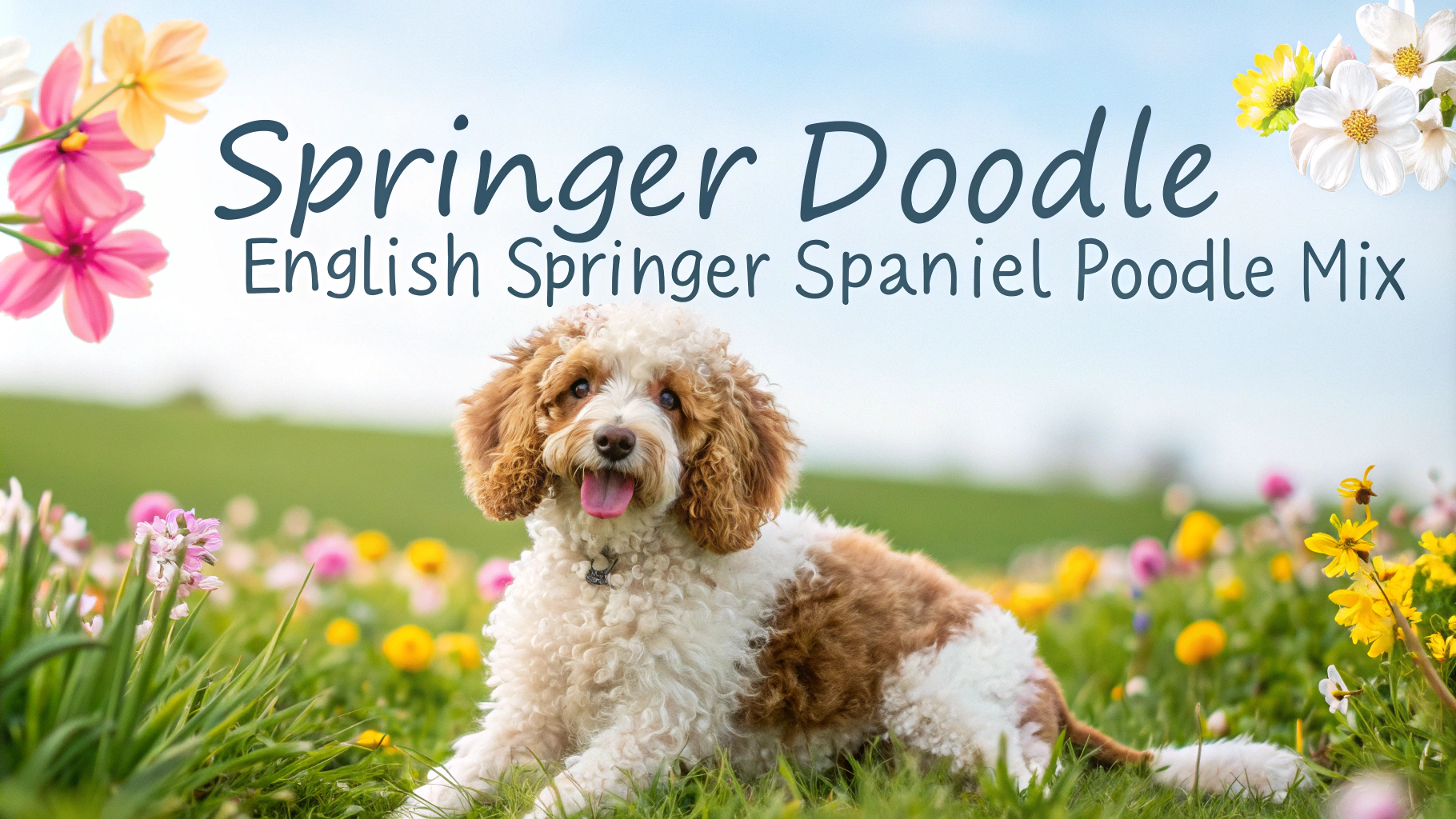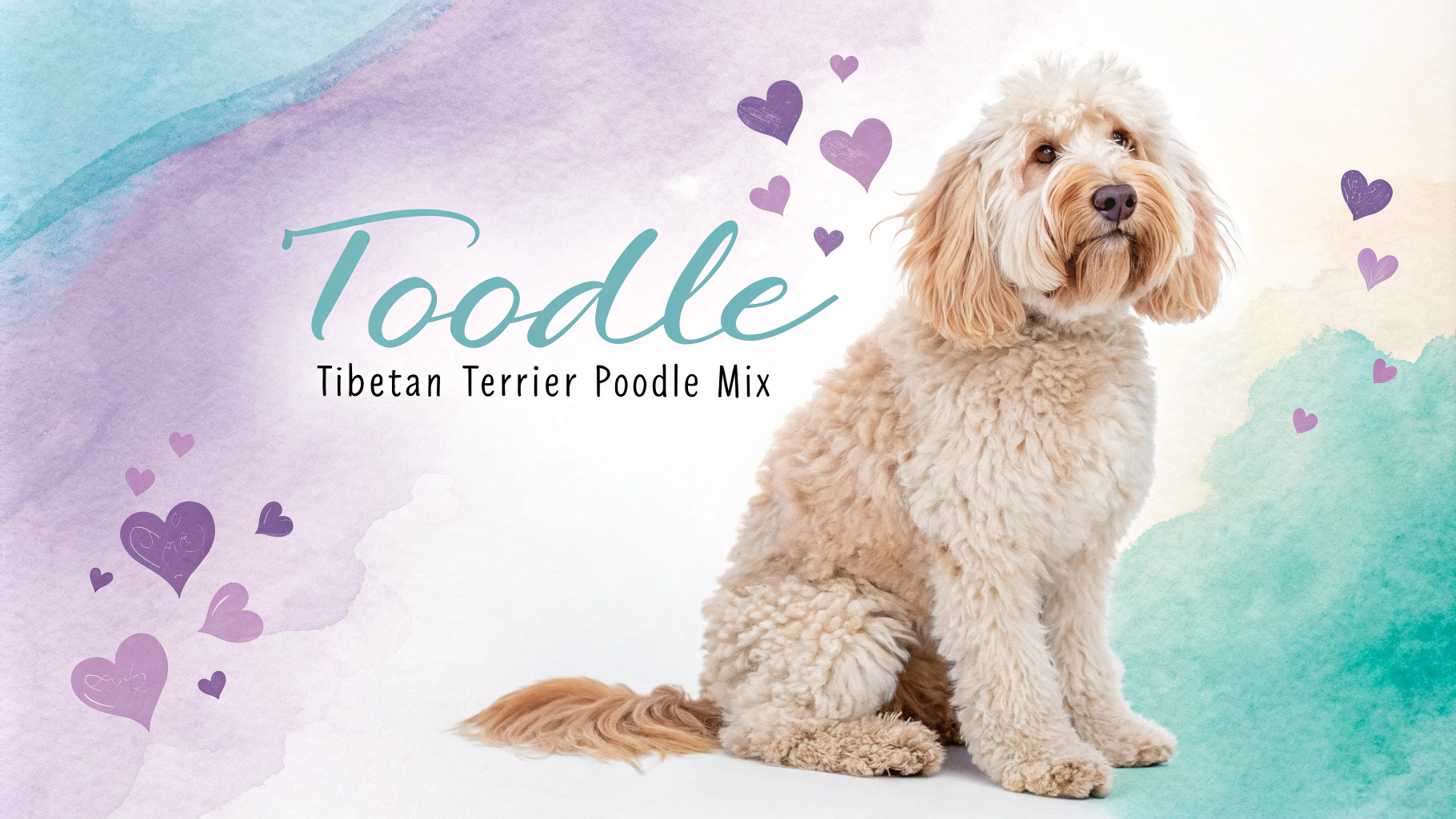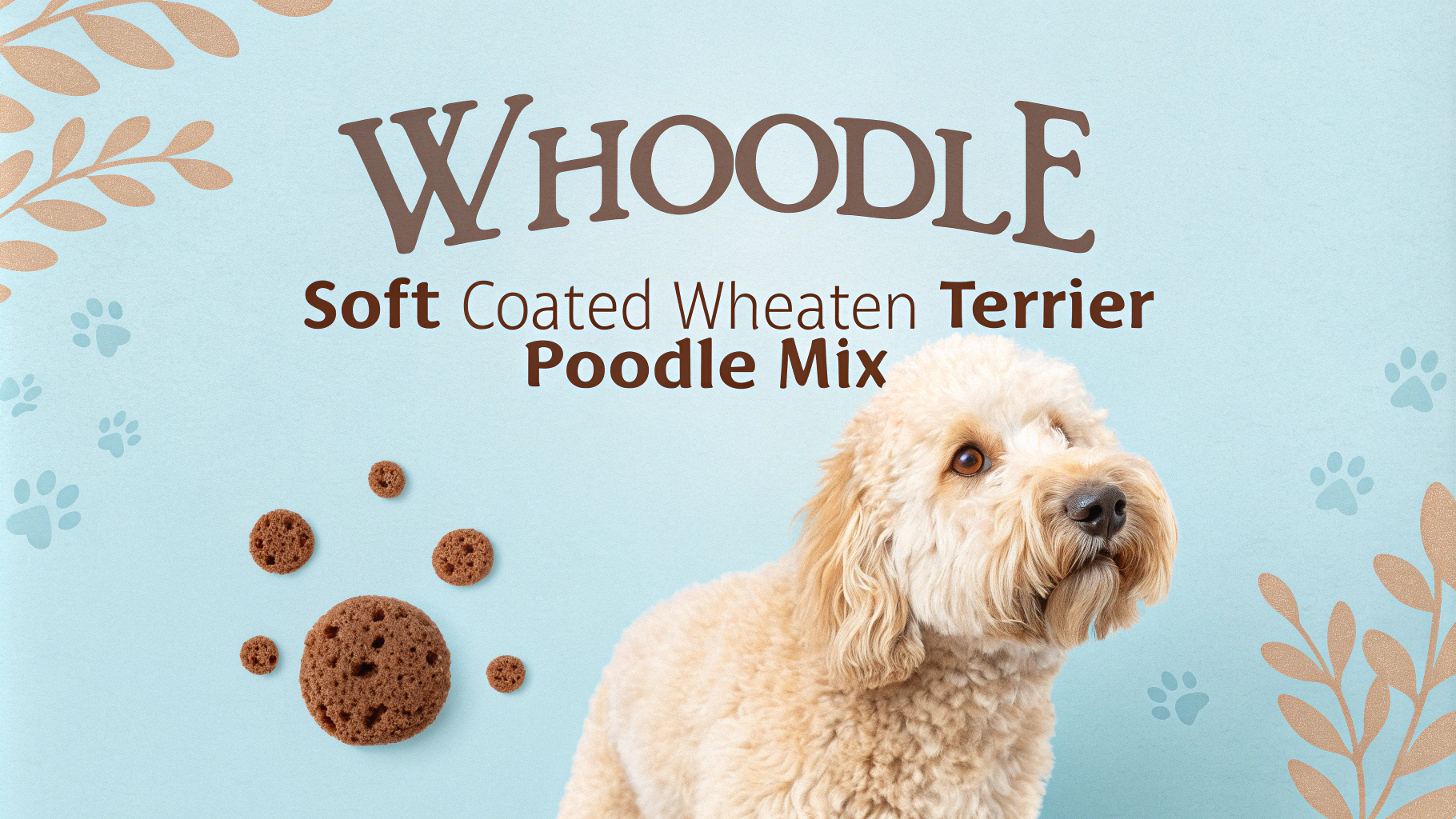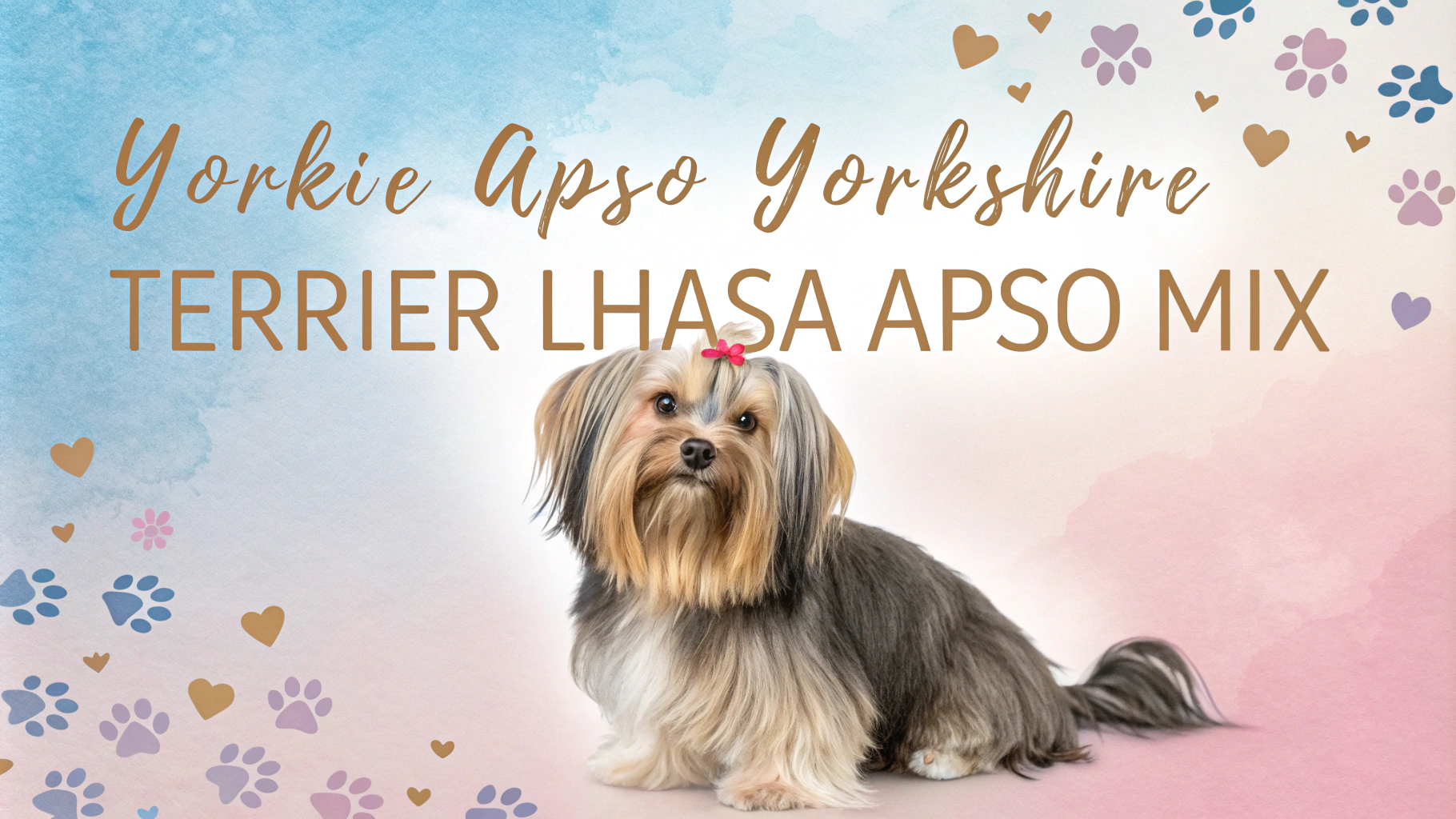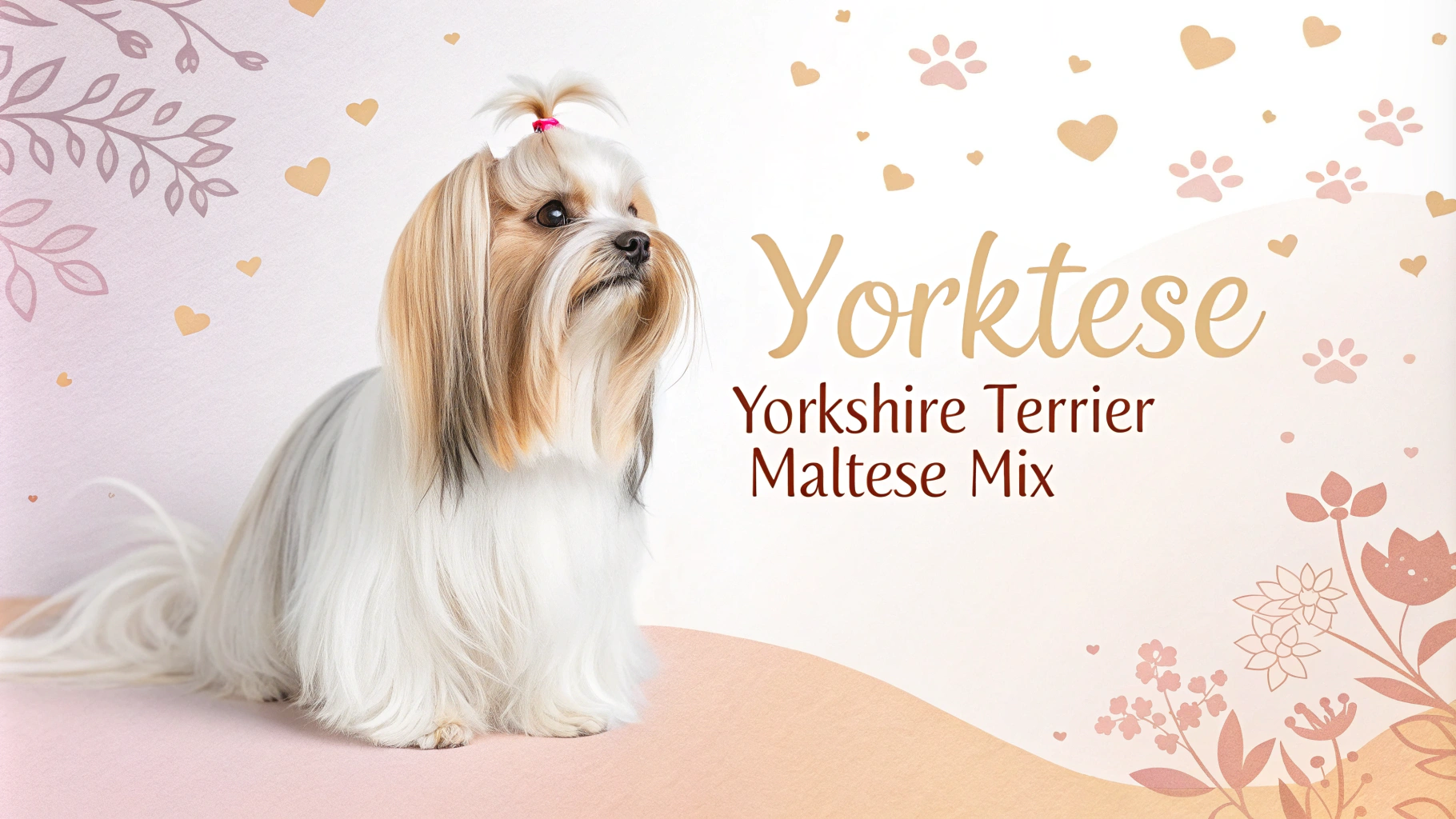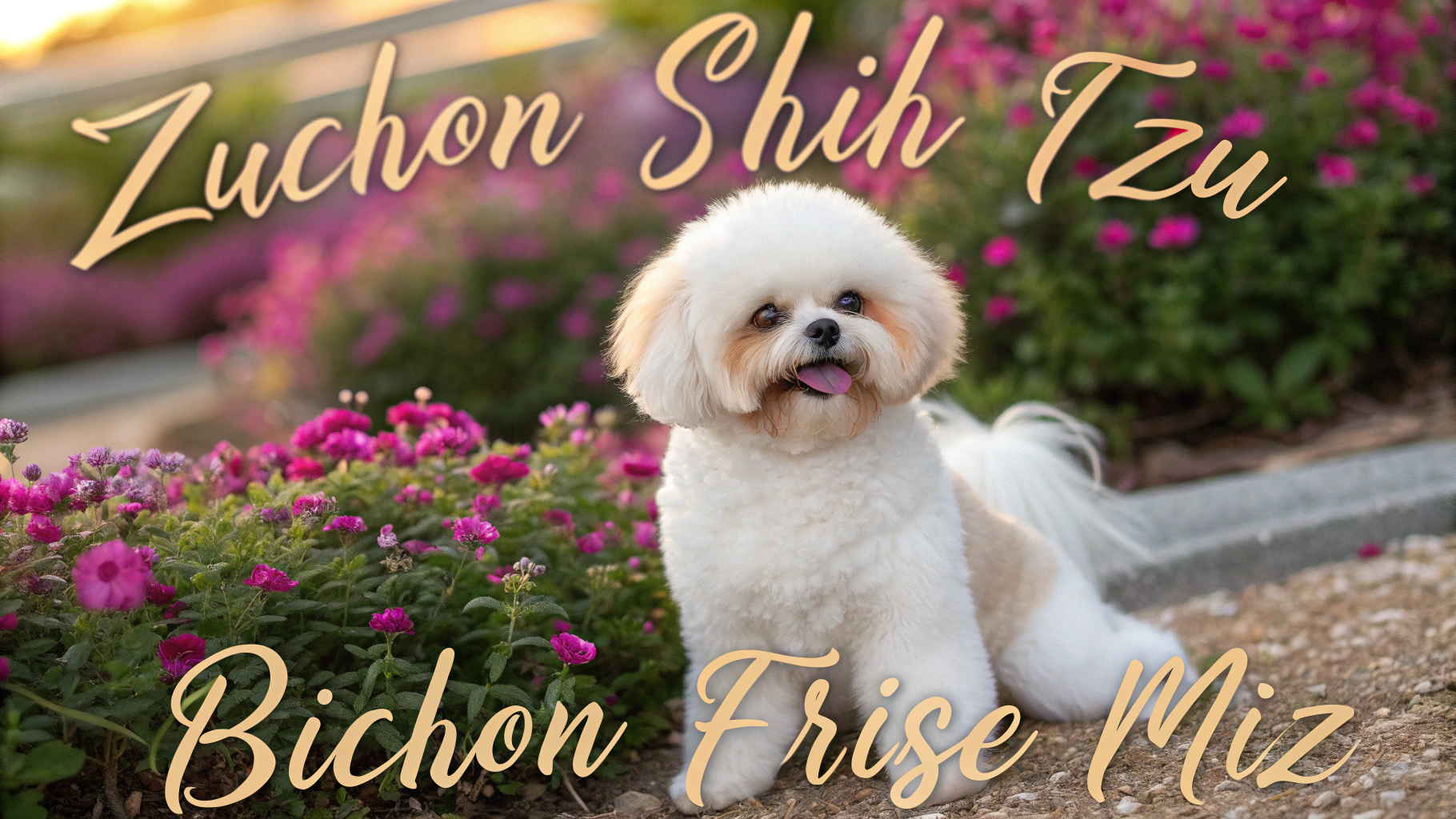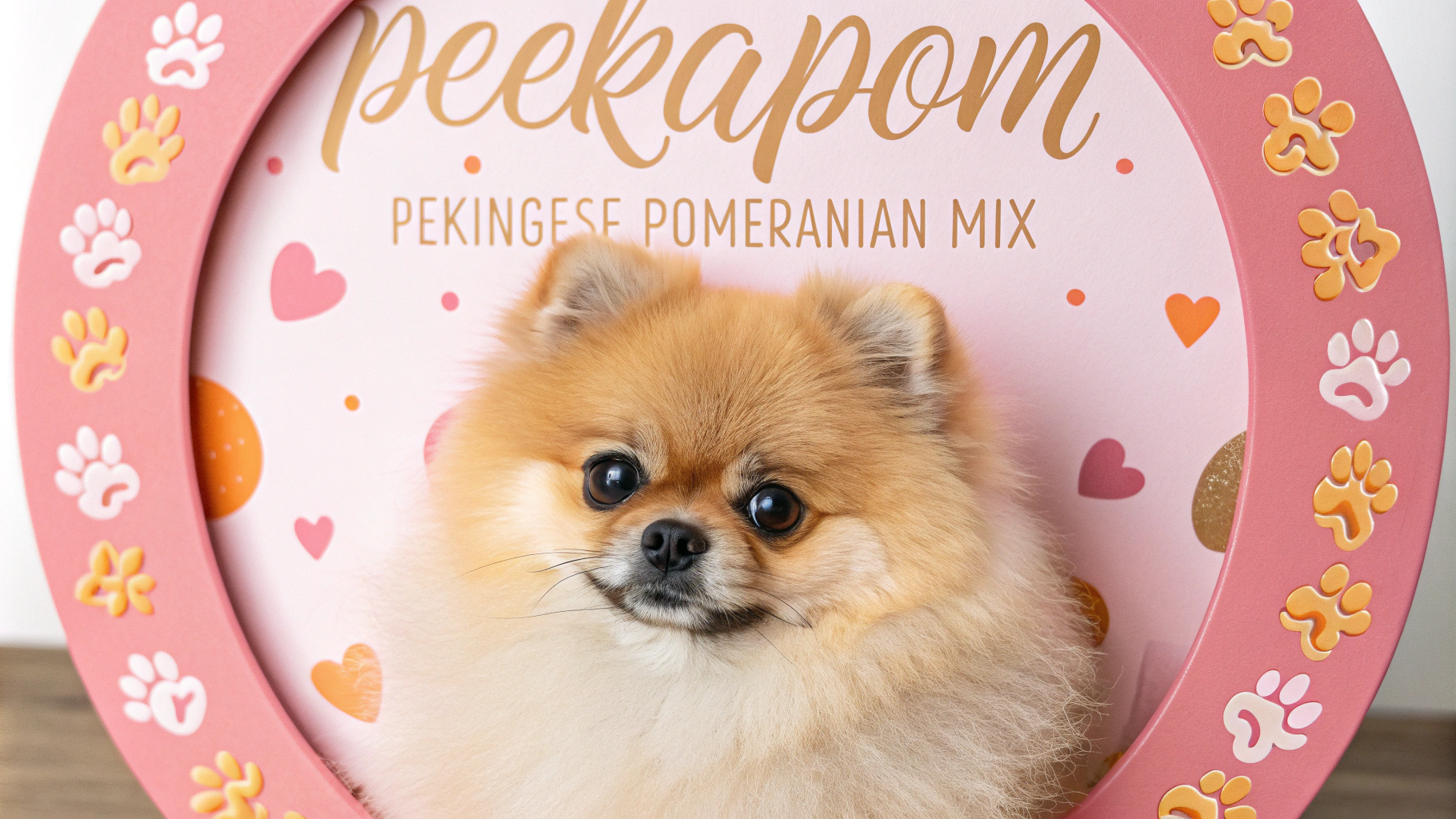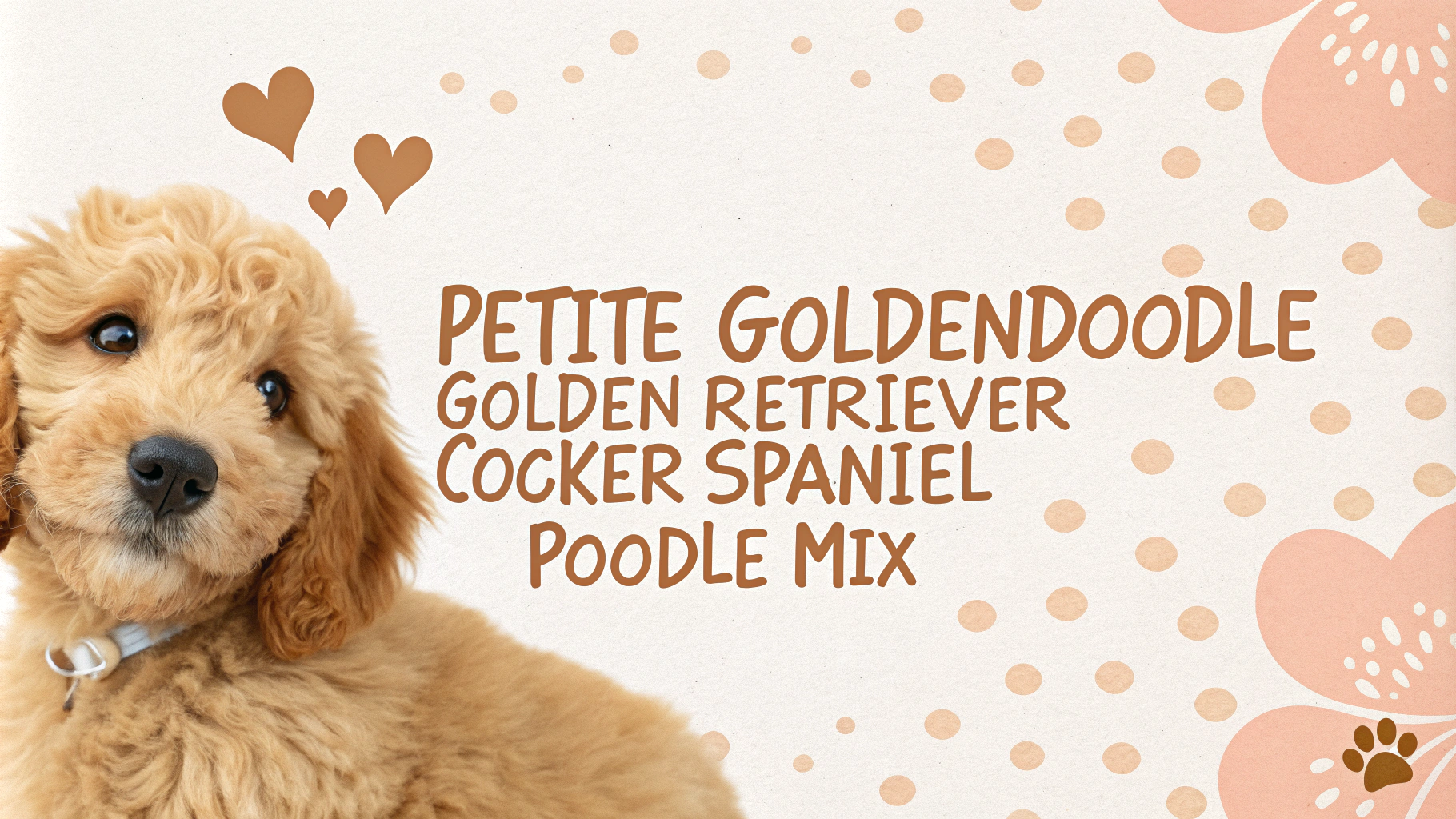The Miniature Labradoodle is a designer dog breed that combines the friendly and outgoing nature of the Labrador Retriever with the intelligence and low-shedding coat of the Toy or Miniature Poodle. This mixed breed offers a smaller alternative to the standard Labradoodle, making it an excellent choice for families living in apartments or those who prefer a more compact companion. Miniature Labradoodles typically inherit the best traits from both parent breeds, resulting in a loving, energetic, and highly trainable dog that adapts well to various living situations.
Key Facts
- Size: 14-16 inches tall at the shoulder
- Weight: 15-25 pounds
- Lifespan: 12-14 years
- Coat: Varies from wavy to curly, low-shedding
- Colors: Black, chocolate, cream, apricot, red, or parti-colored
- Temperament: Friendly, intelligent, and energetic
- Exercise needs: Moderate to high
- Trainability: Highly trainable and eager to please
- Good with children: Yes, when properly socialized
- Good with other pets: Generally yes, but early socialization is important
Character Traits
Miniature Labradoodles are known for their friendly and outgoing personalities, combining the best traits of both parent breeds. They inherit the Labrador Retriever’s sociable nature and love for human companionship, making them excellent family pets. From the Poodle side, they often display high intelligence and a keen eagerness to learn, which contributes to their reputation as highly trainable dogs.
These dogs are typically energetic and playful, enjoying activities that engage both their minds and bodies. They often maintain a puppy-like enthusiasm well into adulthood, which can be both endearing and sometimes challenging for owners. Miniature Labradoodles are generally good with children and other pets when properly socialized, displaying patience and gentleness in their interactions.
One of their most appreciated traits is their adaptability. They can thrive in various living situations, from apartments to houses with yards, as long as their exercise and mental stimulation needs are met. This flexibility makes them suitable for different types of families and lifestyles.
Miniature Labradoodles often inherit a strong desire to please their owners, which, combined with their intelligence, makes them excellent candidates for various dog sports and activities such as agility, obedience, and even therapy work. They tend to form strong bonds with their families and can be prone to separation anxiety if left alone for long periods.
It’s important to note that, like all mixed breeds, individual Miniature Labradoodles can vary in their temperament and traits. While many will display a balanced mix of Labrador and Poodle characteristics, some may lean more towards one parent breed in terms of personality and behavior.
History & Origins
The Miniature Labradoodle is a relatively recent addition to the world of designer dog breeds, emerging as a smaller variant of the standard Labradoodle. The original Labradoodle was first intentionally bred in Australia in the 1980s by Wally Conron, who worked for the Royal Guide Dog Association of Australia. His goal was to create a guide dog that would be suitable for people with allergies, combining the Labrador Retriever’s trainability with the Poodle’s hypoallergenic coat.
Following the success and popularity of the standard Labradoodle, breeders began experimenting with creating smaller versions to cater to those who desired the Labradoodle’s traits in a more compact package. The Miniature Labradoodle was developed by crossing Labrador Retrievers with Miniature or Toy Poodles, rather than Standard Poodles.
The exact timeline of the Miniature Labradoodle’s development is not well-documented, but they likely began appearing in the late 1990s to early 2000s as the designer dog trend gained momentum. Unlike purebred dogs with established breed standards, Miniature Labradoodles can vary significantly in appearance and size, depending on the specific breeding practices and the characteristics of the parent dogs.
It’s important to note that while Labradoodles and their miniature counterparts have gained immense popularity, they are not recognized as official breeds by major kennel clubs such as the American Kennel Club (AKC) or the United Kennel Club (UKC). However, some organizations, like the Australian Labradoodle Association and the International Labradoodle Association, have been established to promote responsible breeding practices and set informal standards for these dogs.
The rise of the Miniature Labradoodle reflects a growing trend in designer dogs that aim to combine desirable traits from different breeds. While they offer many appealing characteristics, potential owners should be aware that, as with any mixed breed, there can be variability in traits, and the “hypoallergenic” quality is not guaranteed in all individuals.
Health Concerns
Miniature Labradoodles, like many mixed breeds, can inherit health issues from both parent breeds. Common concerns include:
- Hip dysplasia: An inherited condition affecting the hip joint
- Progressive Retinal Atrophy (PRA): A group of genetic eye disorders that can lead to blindness
- Ear infections: Due to their floppy ears and potential for excessive hair growth in the ear canal
- Allergies: Both environmental and food allergies can be common
- Addison’s disease: A hormonal disorder more common in Poodles
Regular veterinary check-ups, genetic testing, and maintaining a healthy lifestyle can help mitigate these risks. It’s crucial to obtain a puppy from a reputable breeder who conducts health screenings on parent dogs.
Exercise Needs
Miniature Labradoodles are energetic dogs that require regular exercise to maintain their physical and mental well-being. They typically need:
- 60-90 minutes of daily exercise
- A mix of walks, playtime, and mental stimulation
- Swimming (if they inherit the Labrador’s love for water)
- Interactive toys and puzzle games
These dogs excel in various activities such as agility, obedience, and fetch. Regular exercise helps prevent behavioral issues stemming from boredom or excess energy. However, it’s important to adjust exercise intensity based on the dog’s age, health status, and individual energy levels.
Space Requirements
Miniature Labradoodles are adaptable and can thrive in various living situations, including:
- Apartments or small homes with sufficient exercise
- Houses with small to medium-sized yards
- Urban or suburban environments
While they can adapt to apartment living, they do best with access to outdoor spaces for play and exercise. A securely fenced yard is ideal but not necessary if the owner is committed to providing regular outdoor activities. Indoor space should accommodate the dog’s size and include areas for rest, play, and feeding. It’s crucial to puppy-proof the living space and provide a designated area for the dog to retreat when needed.
Nutrition & Feeding
Proper nutrition is crucial for the health and well-being of Miniature Labradoodles. Key considerations include:
- High-quality dog food: Choose foods appropriate for the dog’s age, size, and activity level
- Portion control: Monitor food intake to prevent obesity, a common issue in Labrador mixes
- Feeding schedule: Typically 2-3 meals per day for adults, more frequent for puppies
- Fresh water: Always available and changed regularly
Some Miniature Labradoodles may have food sensitivities or allergies, so it’s important to observe any adverse reactions to certain ingredients. Consult with a veterinarian to develop a tailored nutrition plan, especially for dogs with specific health concerns or dietary needs. Avoid overfeeding and limit treats to maintain a healthy weight.
Grooming Tips
Miniature Labradoodles require regular grooming to maintain their coat and overall health. Their coat can vary from wavy to curly, depending on which parent they take after more. Brush your Miniature Labradoodle at least 2-3 times a week to prevent matting and tangling, especially in areas prone to knots like behind the ears and under the legs. Use a slicker brush or metal comb to work through the coat gently.
Bathing should be done every 4-6 weeks or as needed, using a mild dog shampoo. Pay attention to their ears, cleaning them regularly to prevent infections. Trim their nails every 2-3 weeks or as needed, and brush their teeth several times a week to maintain good oral hygiene. Professional grooming every 6-8 weeks can help maintain their coat in optimal condition, especially if you prefer a specific style or cut.
If your Miniature Labradoodle has a more Poodle-like coat, they may require more frequent brushing and professional grooming to prevent matting. Consider investing in good quality grooming tools and learn proper techniques to make the grooming process enjoyable for both you and your dog.
Training Approach
Miniature Labradoodles are intelligent and eager to please, making them relatively easy to train. They respond best to positive reinforcement techniques, such as praise, treats, and play. Start training early, ideally when they’re puppies, to establish good habits and socialization skills.
Consistency is key in training these dogs. Use clear, simple commands and reward desired behaviors promptly. Miniature Labradoodles can be sensitive, so avoid harsh corrections or punishment-based training methods. Instead, focus on redirecting unwanted behaviors and reinforcing good ones.
Mental stimulation is crucial for this breed. Incorporate puzzle toys, obedience training, and interactive games into their routine. Socialization is equally important – expose your Miniature Labradoodle to various people, animals, and environments from a young age to ensure they grow into well-rounded adults. Consider enrolling in puppy classes or basic obedience courses to provide structured training and socialization opportunities.
Remember that every dog is an individual, and some may learn faster or slower than others. Be patient and adjust your training approach as needed. With consistent, positive training, Miniature Labradoodles can excel in various activities, including obedience, agility, and therapy work.
